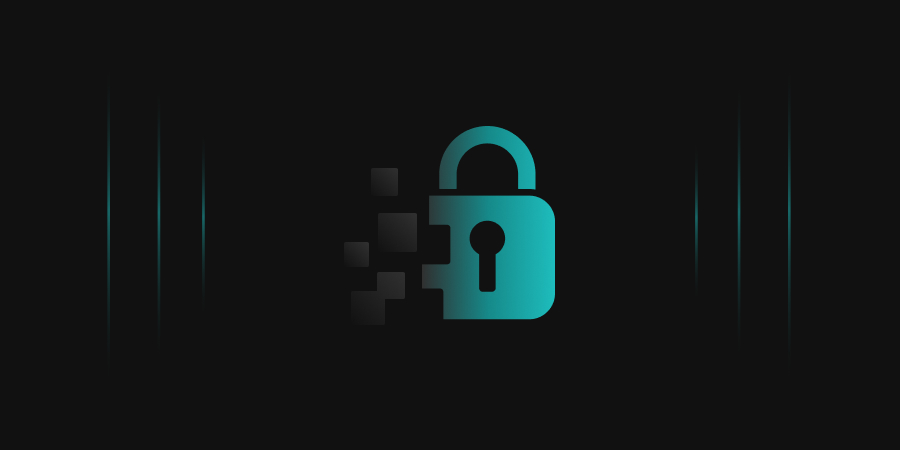You don’t have to look too far to see that software supply chains are getting attacked. In just the past year, attacks on open-source repositories shot up by over 150% (according to Entrust’s April 2025 report), with malicious packages slipping into places like npm and PyPI, quietly waiting for developers to pull them into their code.
At the same time, the build systems that the pipeline companies rely on to turn code into deployable software have become easy pickings for attackers. Weak access controls, unprotected credentials, and unverified build artifacts have made CI/CD platforms a high-reward target.
But it’s not just the tools. Third-party vendors and open-source dependencies are often outside the security team’s direct control, making them a blind spot. And with the average enterprise relying on 600+ SaaS apps and thousands of libraries, keeping tabs on every moving part isn’t just tricky, it’s nearly impossible.
The end result? A perfect storm of risk, where a single unsigned binary or compromised update can lead to full-blown breaches, reputational damage, or compliance failures. The pressure on developers, security teams, and leadership to protect the entire software supply chain has never been higher.
Why Traditional Defences Aren’t Enough Anymore?
Firewalls, antivirus, and even vulnerability scanners have their place, but they weren’t built to deal with the mess that modern software development has become.
Take SBOMs (Software Bills of Materials), for example. On paper, they sound like a great idea: list every component, track every dependency. In practice? Security teams are now flooded with thousands of entries across hundreds of apps, most of which are updated weekly, if not daily. When a new vulnerability drops (think Log4j or XZ Utils), try to figure out if you’re affected and where you can feel like hunting for a needle in a haystack.
Then there are unverified packages. Developers move fast, pulling in open-source libraries by the dozen. But how many of those packages are actually vetted? How often do they check signatures? If you’re not enforcing policy at the point of pull or build, chances are, malicious code can slip in without much resistance.
And let’s not forget the build systems themselves. CI/CD tools are often the unsupervised workhorses of software delivery, pushing updates, signing binaries (sometimes), and packaging releases. But if no one’s watching who has access, which keys are being used, or what’s actually being built, that’s a big problem. Compromising a build pipeline can be just as effective (and far quieter) than breaching a production server.
All of this adds up to a tough situation for CISOs. They need real-time assurance that the code being signed, shipped, or deployed is safe. But with so many gaps from dependency chains to dev tooling, there’s rarely a clear answer. Traditional defences weren’t designed for this level of complexity. And that’s where purpose-built solutions like our CodeSign Secure come in.
Build Systems are the New Breach Frontier
There was a time when attackers focused mainly on stealing credentials or hitting production servers. Now? They’re going straight for your build systems, the place where your software actually gets made.
Why? Because it’s a shortcut. If someone gets access to your CI/CD pipeline, they don’t need to go after every developer or try to poison source code upstream. They just wait until everything is packaged neatly for release, slip in some malware or backdoor, and let you deliver it to customers.
What makes it worse is how much trust is placed in these systems, with surprisingly little oversight. Many orgs still rely on shared secrets or plain-text tokens in build scripts. Signing keys might live on local dev machines or inside unsecured containers. And in some cases, there’s no signing at all, which means it’s anyone’s guess whether a binary is authentic or tampered with.
That’s a big reason attacks like SolarWinds and 3CX hit so hard. Once the attackers got into the build process, they didn’t need to do anything flashy. They just sat quietly in the pipeline and let the automation do the rest.
This is where code signing becomes non-negotiable. It’s not just a formality; it’s a digital receipt that proves your software came from the right source, hasn’t been changed, and can be trusted. But here’s the catch: signing only works if it’s actually integrated into your build and release process, done securely, and managed with control.
And that’s the whole point of tools like our CodeSign Secure to bring structure, automation, and accountability to what’s often the wild west of modern build systems.
Why Code Signing is Non-Negotiable?
Let’s be real, if you don’t trust your own code, why should anyone else?
When software moves through development, testing, and release, there are a lot of hands involved: developers, automation tools, plugins, scripts, open-source libraries, maybe even a few external contractors. Somewhere along that chain, something can go wrong. Code gets tampered with. A build system gets popped. A malicious dependency sneaks in.
That’s exactly what happened in high-profile breaches like SolarWinds, where attackers slipped malware into a signed update. Or the GitHub certificate theft, where attackers made off with valid signing certs to distribute malware that looked completely legit. These weren’t flashy zero-days; they were about trust being broken at the source.
Code signing is how you fix that. When done right, it’s like sealing your software with a tamper-proof stamp. It proves three things:
- Who created it (authenticity)
- That it hasn’t been changed since signing (integrity)
- That it’s safe to run (trustworthiness)
It also gives you a digital trail, so when something goes sideways, you can track it back to the exact build, signer, and time.
But here’s the thing: signing isn’t a checkbox. It only works if:
- You’re using secure key storage (not dumping keys in build scripts)
- Signatures are enforced and verified
- You have visibility and control over who signs what, when, and where
This is where our platform, CodeSign Secure, comes in. It makes code signing part of the pipeline, not an afterthought. It handles keys securely, tracks every signature, and gives you control over signing policies without slowing things down.
In the end, trust doesn’t start at deployment; it starts at the first line of code.
How CodeSign Secure Protects Your Software Supply Chain
This is where our CodeSign Secure steps in. It’s built to give you confidence in what you’re building, signing, and shipping without slowing your team down.
At its core, our platform helps you lock down your code signing process so that only the right code gets signed, and only by the right people or systems. No random devs pushing releases from personal machines. No exposed keys sitting in GitHub Actions. No guessing who signed what.
Here’s how it helps:
- Secure Signing with HSM or Cloud HSM: Your private signing keys stay safe either in a FIPS-certified HSM or a trusted Cloud KMS provider. Our platform makes sure those keys never leave the vault. No more plain-text keys in the build log.
- CI/CD Integration: Our platform plugs right into your existing CI/CD pipelines, whether you’re using Jenkins, GitHub Actions, GitLab, Azure DevOps, Bamboo, or something custom. It automates the signing process right after build, so there are no extra steps, no bottlenecks, and no chance that someone forgets to sign.
- SBOM Correlation Built in: Our platform doesn’t just sign binaries; it also ties in SBOM data. That way, every signed artifact can be traced back to the components inside it. When a new CVE hits, you’re not scrambling to figure out if you’re affected; you already know.
- Enforceable Signing Policies: Want to make sure only release managers can sign production code? Or can test builds not be signed with production keys? Our platform supports fine-grained policy enforcement, so you’re always in control. You can set approvals, enforce role-based access, and even block builds that don’t meet the rules.
- Future-Ready with Post-Quantum Algorithms: Worried about quantum threats? Our platform has your back. It supports post-quantum-safe algorithms like ML-KEM, ML-DSA, and LMS, so your signatures stay valid well into the future, even after quantum computing gets real.
Whether you’re securing internal builds, public releases, or open-source projects, our platform gives you the tools to sign with confidence, track with precision, and respond fast when things go wrong.
Increasing Regulatory and Customer Pressure
It’s not just about good security anymore; it’s about proving it.
Governments and regulators are tightening the screws. In the U.S., Executive Order 14028 kicked off a chain of requirements around software supply chain security. In Europe, you’ve got DORA and NIS2 raising the bar on third-party risk. And don’t forget PCI DSS 4.0, which now expects stronger controls around software integrity and digital signatures.
These aren’t just suggestions, they’re deadlines with real consequences. If your software isn’t signed properly, or if you can’t prove where it came from, you’re suddenly out of compliance and possibly out of business.
And it’s not just the auditors. Customers are asking harder questions, too. They want to know if your software is tamper-proof, if your keys are secure, and how fast you can respond to new threats. “We use HTTPS” or “We have antivirus” doesn’t cut it anymore.
This is where our platform fits in perfectly. It helps you:
- Enforce signing across your SDLC
- Secure keys in HSMs or Cloud KMS
- Track and prove software origin
- Map signed artifacts to SBOMs
- Generate audit-friendly logs and reports
So, when the compliance team comes knocking or a customer wants proof you’re not scrambling. You’ve got the answers ready.
Conclusion
You can patch every server, train every employee, and lock down every endpoint, but if your software supply chain isn’t locked tight, attackers will find a way in.
Our platform, CodeSign Secure, helps you fix that. It puts you back in control of what gets signed, who signs it, and how it’s tracked without slowing down your builds or piling extra work on your team.
Whether you’re a fast-moving startup or a large enterprise juggling multiple teams and pipelines, our platform gives you the tools to:
- Sign everything that matters
- Keep signing keys out of reach
- Prove code authenticity, instantly
- Respond fast when things go wrong
If you’re serious about protecting your software from build to release and showing your customers and auditors that you mean business, it’s time to see our CodeSign Secure in action.




